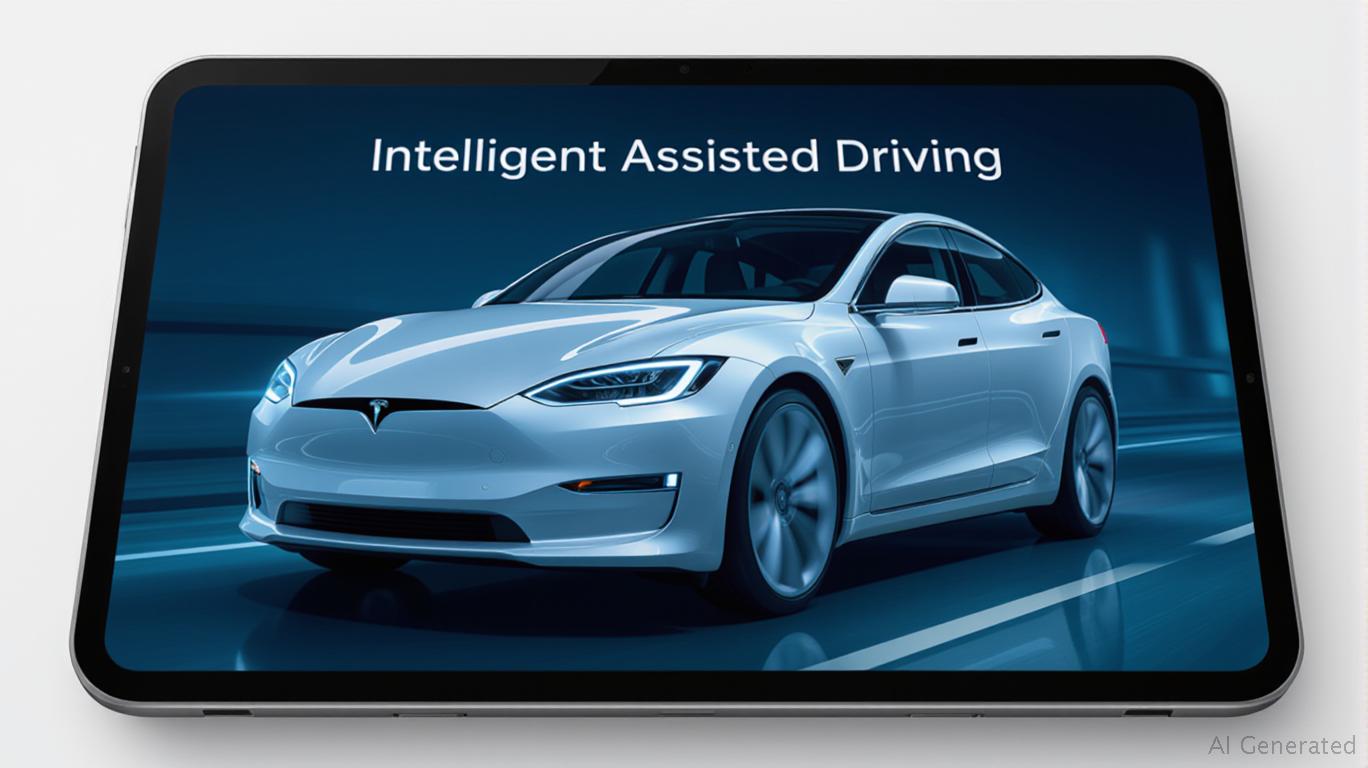China’s recent crackdown on assisted-driving terminology and safety protocols has created a high-stakes regulatory arena where only the most compliant and technologically advanced players will thrive. Tesla’s adaptive strategy—pairing rigorous compliance with its superior Full Self-Driving (FSD) system—positions it to dominate this landscape, while competitors like Huawei struggle to balance innovation with stringent rules. For investors, this is no longer just about tech; it’s about regulatory arbitrage, where winners are those who master the rules while delivering proven solutions.

China’s Regulatory Tightrope: Safety vs. Innovation
China’s 2024–2025 regulatory overhaul bans terms like “autonomous driving” to prevent consumer overconfidence in current tech. New rules mandate driver supervision, disable risky features like remote parking, and require strict oversight of over-the-air (OTA) updates. This isn’t just about safety—it’s about creating a framework where only systems that work reliably under real-world scrutiny can scale.
The result? A bifurcated market:
1. Tesla’s Playbook: Renamed its systems (“Intelligent Assisted Driving”), paused trials to secure approvals, and partnered with Baidu to localize data training. By mid-2025, its FSD rollout in China includes driver-monitoring systems and city navigation—features that comply with safety mandates while outperforming local rivals.
2. Huawei’s Hurdles: While Huawei’s “Auto Wintel” ecosystem powers 80% of Chinese automakers, its reliance on partnerships (e.g., BYD) exposes risks. Data localization laws force Tesla and Huawei alike to innovate within China’s borders, but Tesla’s global AI training (adapted locally) gives it a proven edge in software refinement.
Why Tesla’s FSD Wins the Regulatory Race
Tesla’s FSD isn’t just better software—it’s a compliance-first system that thrives under scrutiny:
– Safety-First Design: Tesla’s driver-monitoring systems and strict “assisted” branding align with China’s focus on accountability. Accidents are rare, and liability is clearly on the driver, reducing regulatory pushback.
– Global Standards Alignment: China’s new rules mirror UNECE protocols, which Tesla already complies with. This gives it a head start in exporting its tech to markets like Europe, where similar safety mandates are emerging.
– Data Localization Mastery: By partnering with Baidu, Tesla avoids the pitfall of data-export bans. Unlike Huawei, which relies on automaker partnerships for data, Tesla’s direct control over its software stack ensures faster iteration.
The Regulatory Arbitrage Opportunity
Investors should focus on firms that combine three pillars:
1. Compliance Rigor: Tesla’s willingness to pause trials and rebrand systems shows it prioritizes regulatory trust.
2. Superior AI Tech: FSD’s real-world performance (e.g., smoother city navigation than Huawei’s ADS) creates a moat against competitors.
3. Global Scalability: China’s rules are becoming a template for other regions. Tesla’s dual approach—local compliance plus global standards—positions it to dominate emerging markets.
Investment Thesis: Buy the Compliant Innovator
Tesla’s stock (TSLA) has dipped on China-specific delays, but this is a buy the dip moment. The company’s Q2 2025 results should reflect FSD’s ramp-up in China, with BYD’s “God’s Eye” system lagging in sophistication. Meanwhile, Huawei’s reliance on automaker partners leaves it exposed to IP disputes and slower innovation cycles.
Action Items for Investors:
– Overweight Tesla: Its FSD is the only system that combines China’s safety-first ethos with cutting-edge AI.
– Avoid Overvalued Local Rivals: BYD and NIO’s stock prices (0728.HK, NIO) may struggle as Tesla’s tech gains traction.
– Watch for Global Rollouts: Tesla’s compliance edge could unlock Europe’s $100B autonomous vehicle market by 2030.
Final Takeaway: Regulations are the New Innovation Engine
China’s crackdown isn’t stifling progress—it’s accelerating it by forcing companies to prove their tech works safely. Tesla’s FSD is the gold standard here, and investors who bet on compliance-driven innovation will ride the next wave of autonomous growth. The road ahead is regulated—but Tesla’s driving it.








